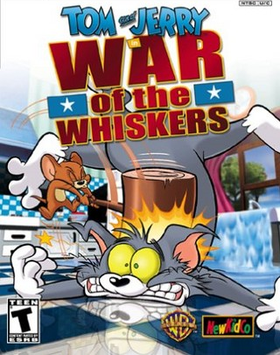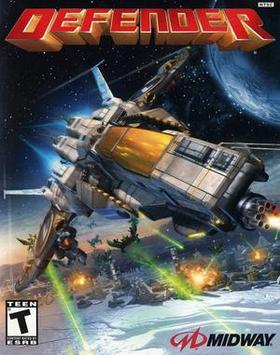
The Simpsons: Road Rage is a 2001 racing video game based on the animated television series The Simpsons, and is part of a series of games based on the show. It was released for PlayStation 2, Xbox and GameCube. A Game Boy Advance version was released in 2003.

The Simpsons: Hit & Run is a 2003 action-adventure game developed by Radical Entertainment and published by Vivendi Universal Games. It is based on the American animated sitcom The Simpsons, and is the twenty-second installment in the Simpsons series of video games.

Red Faction II is a first-person shooter video game developed by Volition and published by THQ for the PlayStation 2, GameCube, Windows and Xbox. It is the sequel to Red Faction and the second installment in the Red Faction series. The game changed the direction of the first game by introducing a greater emphasis on action and a new setting on Earth, rather than Mars.

Alien Hominid is a run and gun video game developed by The Behemoth and first released as a Flash game on the multimedia website Newgrounds on August 7, 2002. It was originally developed in Adobe Flash by programmer and Newgrounds founder, Tom Fulp, and animator and artist, Dan Paladin. It has since been re-released in several expanded and enhanced iterations for home consoles and computers.

The Sims Bustin' Out is a video game developed by Maxis and published by Electronic Arts in 2003 for the PlayStation 2, Xbox, GameCube, Game Boy Advance, and in 2004 for the N-Gage. It is the second title in The Sims console series and the first title not concurrently released on Windows PC.

NBA Live 2004 is the 2004 installment of the NBA Live sports video game series. The game was developed by EA Canada and released in 2003. It is graphically similar to NCAA March Madness 2004 and has the same create-a-player models. It was the last EA game to include Michael Jordan. The cover shows Vince Carter as a member of the Toronto Raptors; in Spain it is Raul Lopez instead. This was also the first game to feature the Charlotte Bobcats, who would play their first season of basketball in the fall of 2004. Since the game's rosters were finalized before the Bobcats would host their expansion draft, the Bobcats' lineup consisted of players named after their specific positions; for example, the point guard was named "Point Guard".

NBA 2K6 is a 2005 basketball simulation video game developed by Visual Concepts and published by 2K. It is the seventh installment in the NBA 2K franchise and the successor to ESPN NBA 2K5. It was released in 2005 for PlayStation 2, Xbox, and Xbox 360. Shaquille O'Neal of the Miami Heat is the cover athlete of the game. NBA 2K6 is the predecessor to NBA 2K7 in the NBA 2K series and is the first NBA 2K title to be released by 2K Sports. This is the first game in the series to be released for the Xbox 360.

Barbarian is a 3D fighting video game developed by Saffire, published by Titus Interactive and distributed in Europe by Avalon Interactive. The game was released in North America in 2002, and in Europe in December 2003. The Japanese title is Warrior Blade: Rastan vs. Barbarian.

Metal Slug 3 is a run and gun video game developed by SNK. It was originally released in 2000 for the Neo-Geo MVS arcade platform as the sequel to Metal Slug 2/Metal Slug X. The music of the game was developed by Noise Factory.

SpyHunter is a vehicular combat game. It is a remake and sequel of the 1983 arcade game of the same name first released for PlayStation 2 in 2001. It has since been ported to GameCube, Xbox, Game Boy Advance, Microsoft Windows, OS X, and Tapwave Zodiac. In the game, the player drives the G-6155 Interceptor, an advanced, weaponized spy vehicle. Unlike the original's top-down view, the remake is played with a chase camera, similar to a racing game.

FIFA Football 2004, also known as FIFA Soccer 2004 in North America, is a football simulation video game developed by EA Canada and published by Electronic Arts. It was released in October 2003 with the tagline "Create Brilliance".

Rocky is a fighting video game published by Rage Software and released in 2002. The game is based on the Rocky franchise.

Terminator 3: Rise of the Machines is a first-person shooter video game based on the film of the same title, with elements of hand-to-hand combat in the third-person perspective. It was developed by Black Ops Entertainment, with assistance work done by other Atari-owned subsidiaries. The game was published by Atari for PlayStation 2 and Xbox in 2003. An isometric shooter version was released for the Game Boy Advance during the same year.The game was also going to be released for GameCube, but was eventually cancelled.

Constantine is a 2005 action-adventure game developed by Bits Studios, and published by THQ in North America and SCi Games in Europe. The game was released for PlayStation 2, Windows, and Xbox in February/March 2005. It is based on the DC Comics character John Constantine and is a movie tie-in license of the Warner Bros. film Constantine, in turn based on DC Comics comic book series, Hellblazer from the Vertigo issues for John Constantine.

Tom and Jerry in War of the Whiskers is a fighting video game developed by VIS Entertainment, published by NewKidCo for PlayStation 2, GameCube, and Xbox. It is the sequel to the 3D cartoon fighting video game Tom and Jerry in Fists of Furry for Nintendo 64 and Microsoft Windows. It allows up to four players to play simultaneously. It is the only NewKidCo game and the only Tom and Jerry game, released to receive a T rating. The PlayStation 2 version was released in all major regions, and the GameCube and Xbox versions were only released in North America. The game received mixed reviews from critics, with Metacritic scores of 63/100, 64/100, and 50/100 on PlayStation 2, GameCube, and Xbox, respectively.
True Crime is a series of open world action-adventure video games told from the perspective of law enforcement. There are two games in the series, True Crime: Streets of LA, released in 2003, and True Crime: New York City, released in 2005. Each game features GPS-accurate open world recreations of parts of Los Angeles and New York City, respectively. Streets of LA was developed by Luxoflux for the PlayStation 2, Xbox and GameCube, and ported to Microsoft Windows by LTI Gray Matter, to mobile by MFORMA and to macOS by Aspyr. It was published on all systems by Activision, except the Mac version, which was published by Aspyr. New York City was developed by Luxoflux for PlayStation 2, Xbox and GameCube, and ported to Windows by Aspyr and to mobile by Hands-On Mobile. It was published on all systems by Activision.

IndyCar Series is a racing simulator developed by Brain in a Jar and published by Codemasters. The game was released in 2003 for PlayStation 2, Xbox, and Windows. The game is based on the 2002 Indy Racing League. A sequel to the game, IndyCar Series 2005, was released in 2004 for PlayStation 2, Xbox, and Windows based on the 2003 IndyCar Series.

Aliens Versus Predator: Extinction is a 2003 military science fiction real-time strategy video game developed by Zono and co-published by Fox Interactive and Electronic Arts for the PlayStation 2 and Xbox. Based on the Alien vs. Predator franchise, the game offers three single player campaigns that cover Alien, Predator, and human storylines. Each storyline and species has unique characteristics and gameplay elements that are adapted from film and comic sources.

Defender is a shoot 'em up video game developed in October 2002 for the PlayStation 2, and Xbox, and was ported to the GameCube the following month, followed by a port to the mobile phone version published by THQ in 2003. The game was also rereleased for Xbox 360's Live Arcade in November 2006. It is a remake of the 1981 game of the same name. Featuring three-dimensional (3D) graphics, the game is set on multiple planets and moons within the Solar System where the player must defeat waves of invading aliens while protecting astronauts.

RoboCop is a first-person shooter video game based on the RoboCop films. It was developed and published by French company Titus Interactive, which acquired the rights to produce RoboCop video games in 1999. After several schedule changes, the game was released in 2003 for Microsoft Windows, PlayStation 2, and Xbox, with the European versions distributed through Avalon Interactive. A GameCube version was released in Japan in 2004, under the title RoboCop: Aratanaru Kiki. According to Metacritic, the Xbox version, the only one to be released in North America, received "unfavorable" reviews.



















